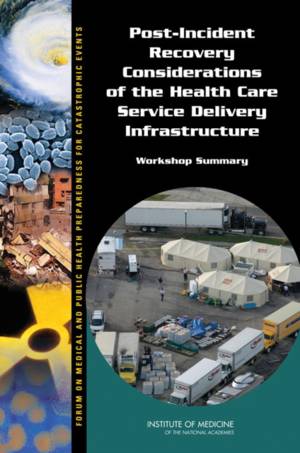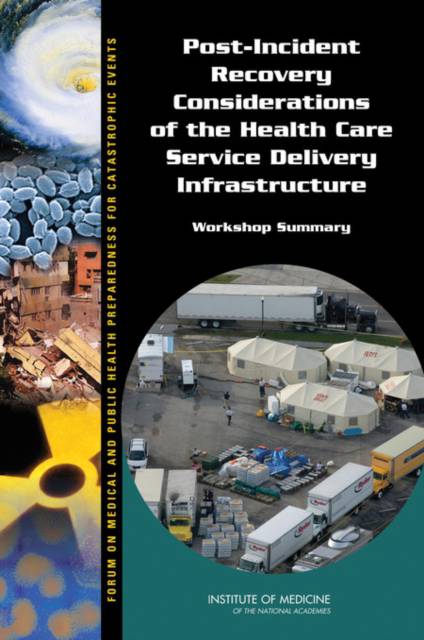
- Retrait gratuit dans votre magasin Club
- 7.000.000 titres dans notre catalogue
- Payer en toute sécurité
- Toujours un magasin près de chez vous
- Retrait gratuit dans votre magasin Club
- 7.000.0000 titres dans notre catalogue
- Payer en toute sécurité
- Toujours un magasin près de chez vous
Post-Incident Recovery Considerations of the Health Care Service Delivery Infrastructure
Workshop Summary
Institute of Medicine, Board on Health Sciences Policy, Forum on Medical and Public Health Preparedness for CatastrophicDescription
Health systems and assets are a large part of the critical infrastructure of any community and are vital not only for the safety and well-being of its citizens, but also for the economic vitality, quality of life, and livelihood of the entire community. As part of its ongoing mission to foster dialogue among stakeholders and to confront the challenges inherent in ensuring the nation's health security, the Institute of Medicine (IOM) Forum on Medical and Public Health Preparedness for Catastrophic Events sponsored a town hall session at the 2012 Public Health Preparedness Summit. This event took place February 21-24 in Anaheim, California.
In this session sponsored by the IOM, the focus of discussion was sustaining health care delivery beyond the initial response to a disaster and facilitating the full long-term recovery of the local health care delivery systems. Many elements required for recovery are also fundamental to the day-to-day operations of these systems. Investing in improved health care delivery systems, both financially and through collaborative capacity building, can enhance economic development and growth before a disaster, and also prove instrumental in sustaining services and recovering after a disaster.
Post-Incident Recovery Considerations of the Health Care Service Delivery Infrastructure serves as a summary of the session and explains the value of regional capacity building; the importance of interagency, intergovernmental, and public-private collaboration; and the significant role that health care coalitions can play in ensuring resilient communities and national health security.
Spécifications
Parties prenantes
- Auteur(s) :
- Editeur:
Contenu
- Nombre de pages :
- 40
- Langue:
- Anglais
Caractéristiques
- EAN:
- 9780309260602
- Date de parution :
- 27-09-12
- Format:
- Livre broché
- Format numérique:
- Trade paperback (VS)
- Dimensions :
- 152 mm x 229 mm

Les avis
Nous publions uniquement les avis qui respectent les conditions requises. Consultez nos conditions pour les avis.






